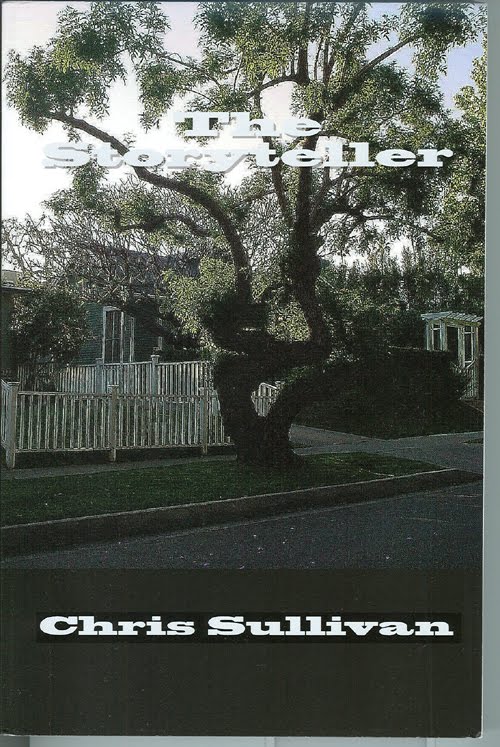Is there any one thing that has changed your life; if you think back and enjoy thinking back you may find it.
In script writing there is always a life changing event at the end of the first act and at the beginning of the second; without that life changing event the story would just drone on and on and in fact all stories are like that.
They have the set up, where everybody is introduced, the obstacle or the life changing event then the resolution. There are a lots of other things that happen in most screenplays like Rocky all at sea, with just a few minutes to go, then his trainer cuts his eyelids and he fights to a draw.
The screenplay is nothing new in fact that's the way stories are written since way before Shakespeare (look at Romeo and Juliet) right back to Sophocles.
In a movie it's usually on page 20 – about 20 minutes into the film.
There are things that change your life and sometimes those things that change an individual's life change history.
There was a man called Brendan Bracken; he was an Irishman who went to live in Australia, where his father was a builder, and he migrated to England to be Churchill's confidant during the inter-war wilderness years.
The greatest thing he did for Churchill was to make it possible for him to take over from Neville Chamberlain as Prime Minister when all looked lost.
Nobody of any import wanted Churchill as Prime Minister; Chamberlain, The King, The House of Lords and The Labour Party wanted Lord Halifax.
When the time came for Chamberlain to step down he set up a meeting of the contenders in Downing Street to discuss the crisis. Lord Beaverbrook and Bracken found Churchill brooding alone in one of his clubs and warned him of the upcoming meeting.
Bracken, like Churchill, was an enemy of appeasement, and he deduced that the best thing Churchill could do in the meeting was to keep quiet.
I don't know whether Bracken was a poker player or not but his ploy worked. Chamberlain was trying to decide who was going to work with whom and probably wondered if Churchill would be able to work with Lord Halifax etc but Churchill just sat in silence.
After a long pause with Churchill keeping his silence Lord Halifax said that his position in The House of Lords would make it difficult for him to be Prime Minister. The next morning news came that Hitler had invaded Belgium and Holland and Churchill went to the palace to tell the king he was forming a government.
So not only was that a life changing event for Churchill, and Bracken, it was a history changing moment.
Now I can point to a few things in my life that changed things; this is apart from the personal things such as marriage and having children
I remember when I finished riding the motor bikes for the post office; I was nearly 19 and it was time. At 18 the usual thing was to be transferred to train to be a postman. It was something I really didn't want to be and when I was delivering mail one day, one of the companies I delivered to offered me a job.
It was a terrible job in a wallpaper and paint warehouse but it allowed me to be able to stay in bed till 7:30 and I didn't have to wear the heavy postman's uniform.
As soon as I started they sacked somebody else – someone who looked like me, as a matter of interest, and then after a month or so they asked me to leave. They didn't like my sense of humour: one of the supervisors said to me one day “Hurry up.” and I answered “Hurry up broke his neck.”
Only a joke but when I had the meeting when they told me I had to go it was brought up and I said it was only a joke - “well we don't like those kind of jokes!”
In those days you would just call the Personnel Department wherever you wanted to work and if they had any vacancies in their organisation they would invite you in – the forerunner of the HR department (Human Resources).
So I ended up working in the British Car Industry as a Material Controller; if they were manufacturing 400 Morris Minors that week, for example, I had to make sure that 2000 wheels, tyres, the nuts and bolts etc were there ready for the workers on the assembly line.
I was useless at the job and in the first week they had to send a whole assembly line of men home because I didn't order whatever requirements the vehicles needed. There were complaints from the cleaners too about my desk as it as always full of papers.
I met a young lad there who said he wanted to be an actor and my ears pricked up; he had all the answers and I was all ears and I made enquiries.
When the inevitable happened, and they called me in for a meeting to tell me I had to go, I told them I was going to The Royal Academy of Dramatic Art and they said “...the Royal Acad . . . Royal Academy of What????”
Actually I went to Birmingham – London was a bit far for me in those days!!
I was always kind of show business inclined – I wanted to be a rock singer – but that was the event for me. I went ahead and I never gave up; the young lad with all the answers never did.
My parents always suspected I'd be an actor, my nick name was John Barrymore as a child, so I might have drifted into it in any case; who knows?



















